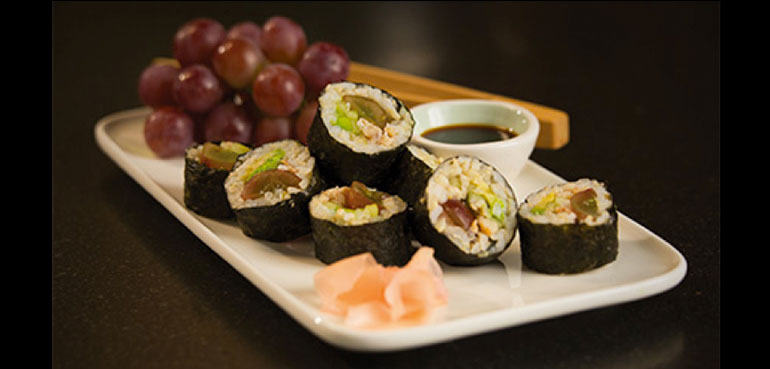If nibbling on a California roll is the extent of your Japanese food experience, you might consider getting better acquainted with this tasty fare.
If nibbling on a California roll is the extent of your Japanese food experience, you might consider getting better acquainted with this tasty fare. Japanese cuisine is often regarded as one of the healthiest on Earth, with its concentration on fresh fish, seafood, rice, and vegetables. According to the World Health Organization, the life expectancy of Japanese women is 86 years – the highest in the world (beating American women by six years). The Japanese diet blasts fat, too. Only 3 percent of the country’s population is obese, compared to 32 percent of Americans. One likely reason is that Japanese meals feature a variety of foods served in small portions.
So when you’re asking yourself what’s for dinner, Japanese food may be a top choice. While several mainstays of Japanese dining offer clear health benefits, we’ve highlighted a few of our favorites:
- Cabbage: Cabbage is a key ingredient in Japanese salads and soups and it’s one of the most impressive brassica vegetables on Earth. Brassica vegetables contain compounds called indoles, which have been shown to dramatically reduce the risk of cancer. In one study, for example, eating cabbage more than once a week cut men’s colon cancer odds by 66 percent. Cabbage also stimulates the immune system, kills bacteria and viruses and acts as a blood purifier. Plus, it’s rich in fiber, which helps keep blood sugar levels in check and fat off the hips.
- Green Tea: The preferred ending to a traditional Japanese meal, green tea contains some of the most powerful disease-fighting compounds on the planet. In fact, a single cup of green tea has more antioxidants than most fruits and vegetables. Tea’s catchins, a member of the polyphenol family, are at least twice as potent as vitamins C and E in their ability to prevent cell damage. And there’s evidence that drinking tea may reduce the risk of heart disease. Still not convinced tea is your thing? Maybe this will change your tune: Research shows green tea raises your metabolic rate so you burn calories faster.
- Wasabi: Wasabi, also known as Japanese horseradish, almost always appears alongside sushi and sashimi. The strong-tasting green paste contains bioactive chemicals that act as an antidote for food poisoning. Perhaps that’s one reason why the Japanese serve it alongside raw fish. Wasabi also contains isothiocyanates, compounds that have powerful anti-inflammatory properties. And that’s a must for Americans, since nearly every chronic disease from cancer to stroke is linked to inflammation.
- Mushrooms: Many mushroom varieties, including shitake and enoki, are popular in Japanese cuisine. They’re rich in protein, fiber, B vitamins, calcium and disease-fighting phytochemicals. What’s more, mushrooms have powerful effects on the immune system – especially the Maitake, Shiitake and Reishi varieties. Physicians in Asia use mushrooms as a complement to cancer treatment since they’re known to help counteract the toxic effects of chemotherapy and radiation, while simultaneously shrinking tumors. And Japanese researchers have found that regularly eating shiitake mushrooms lowers blood cholesterol levels up to 45 percent.
- Seaweed: Japanese cuisine features seaweeds like kelp, wakame, arame and dulse in soups, stews and other dishes. Chefs also use this salty, sea-flavored veggie as a wrap for sushi. And that’s good news for health conscious diners since seaweed contains the broadest range of minerals of any food, including potassium, calcium, magnesium, iron, and iodine. It also boasts vitamin C, fiber, beta-carotene, and B vitamins.
With all of these health benefits, it’s no wonder Japanese cuisine is growing in popularity. Sushi appears in many grocery store delis, you can buy green tea by the gallon and savvy food manufacturers are making seaweed into chips! Each of these foods are hallmarks of Japanese cuisine, and each boasts unique health benefits not available in the typical American diet.

